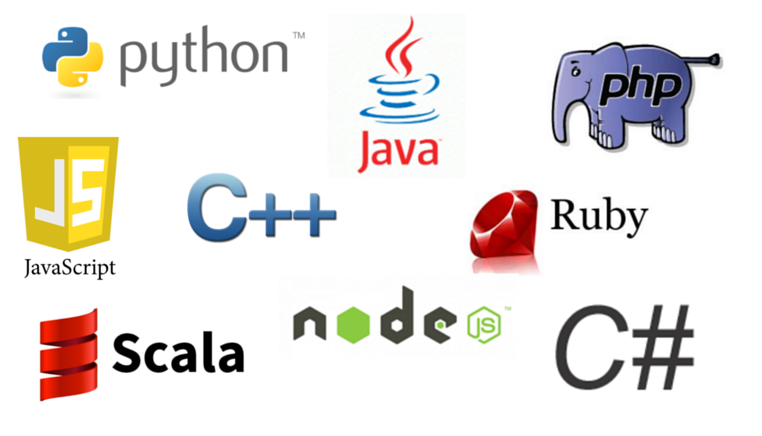
Introduction
In today’s digital era, programming languages are the backbone of technology. They serve as the medium through which developers communicate with computers to create software, websites, apps, and more. From operating systems to websites, games to data analysis tools, programming languages enable the modern digital world. But what exactly are programming languages, and how are they used in real-world applications?
This article will dive into the essentials of programming languages, their types, features, and explore their extensive applications across various industries.
What is a Programming Language?
A programming language is a set of rules and syntax used to instruct a computer on performing specific tasks. It consists of symbols, characters, and commands that create a set of instructions executable by computers. Programming languages are classified into different types, each serving a unique purpose and providing different capabilities.
Types of Programming Languages
Programming languages are generally divided into several categories based on their purpose, level of abstraction, and functionality.
1. High-Level Languages
High-level languages are more abstract and closer to human language. They are easy to read, write, and understand, making them popular for application development. Examples include Python, Java, and JavaScript.
- Python: Known for its readability and versatility. Commonly used in web development, data science, artificial intelligence, and automation.
- Java: A versatile, platform-independent language often used in web applications, Android development, and enterprise solutions.
- JavaScript: Primarily used for web development, especially in creating dynamic and interactive web pages.
2. Low-Level Languages
Low-level languages are closer to machine code and are less abstract, providing more control over hardware. These languages are mainly used for system programming and embedded systems.
- Assembly Language: Provides direct control over the hardware, often used in systems requiring high performance and low-level hardware interaction.
- Machine Language: The most fundamental language, consisting of binary code. It is challenging for humans to read but is directly executed by the computer’s CPU.
3. Scripting Languages
Scripting languages are typically used for automating tasks, manipulating data, and enhancing web functionality.
- PHP: A server-side scripting language popular for web development and creating dynamic web pages.
- Ruby: Known for its simplicity, used in web development and system utilities.
- Shell Scripting: Often used in Unix/Linux environments for task automation.
4. Object-Oriented Languages
Object-oriented languages use the concept of “objects,” making them ideal for building modular and reusable code.
- C++: An extension of C, adding object-oriented features; often used in game development, operating systems, and real-time systems.
- C#: Developed by Microsoft, widely used for desktop applications, web applications, and games with Unity.
Features of Programming Languages
While every programming language has unique syntax and usage, certain core features make them effective for development:
- Syntax: The set of rules that define valid structures in the language. Clear syntax improves code readability and reduces errors.
- Data Types: The classification of data items (e.g., integers, strings) that allows handling of different forms of information.
- Control Structures: Constructs like loops and conditionals that control the flow of the program.
- Error Handling: Mechanisms to manage unexpected errors or bugs, enhancing program reliability.
- Libraries and Frameworks: Pre-written code collections and templates that accelerate development and reduce redundancy.
Real-World Applications of Programming Languages
Programming languages play a critical role across various industries, each language offering unique benefits based on the industry’s requirements. Let’s explore some prominent applications:
1. Web Development
Web development involves building websites and web applications. Popular languages include HTML, CSS, JavaScript, PHP, Python, and Ruby.
- Front-End Development: JavaScript, HTML, and CSS are essential for creating interactive, user-friendly websites. Frameworks like React, Angular, and Vue.js are commonly used to build dynamic front-ends.
- Back-End Development: PHP, Python, Ruby, and Node.js handle server-side operations. Python’s Django and Flask, as well as PHP’s Laravel, are popular frameworks for web development.
2. Mobile App Development
Mobile app development focuses on creating applications for smartphones and tablets. Major languages include Swift for iOS and Kotlin or Java for Android.
- Swift: Apple’s programming language for iOS applications, known for its safety, speed, and easy-to-read syntax.
- Kotlin: Google’s preferred language for Android development, offering improved safety features and easier interoperability with Java.
- Java: Still widely used for Android app development due to its robustness and extensive library support.
3. Data Science and Machine Learning
Data science requires languages capable of handling vast amounts of data, making Python and R popular choices.
- Python: Known for its powerful libraries like Pandas, NumPy, and TensorFlow, Python is ideal for data analysis, machine learning, and deep learning applications.
- R: Primarily used in statistical computing, R is valuable for data mining, statistical analysis, and creating visualizations.
4. Game Development
Game development demands high-performance languages that can handle intensive graphical processing.
- C++: Favored in game development due to its efficiency and control over system resources. Used extensively in game engines like Unreal Engine.
- C#: The go-to language for Unity, a popular game engine used to create both 2D and 3D games.
- JavaScript: Used for developing web-based games or simple browser games due to its wide support on web platforms.
5. Embedded Systems
Embedded systems are specialized computer systems within larger mechanical or electrical systems, often used in automotive and home appliances.
- C: Common in embedded systems due to its minimal overhead, efficiency, and control over hardware.
- Assembly Language: Provides direct control over hardware and is used when high performance is essential, such as in microcontrollers and firmware.
6. Finance and FinTech
Financial applications demand languages that are reliable, scalable, and secure.
- Python: Used in financial data analysis and algorithmic trading due to its robust data-handling capabilities and extensive libraries.
- Java: Known for its security and scalability, Java is commonly used in large-scale financial systems and transaction processing.
- SQL: Essential for managing databases, which store vast amounts of financial data, SQL is a standard in the finance industry.
7. Artificial Intelligence and Robotics
Artificial intelligence (AI) and robotics demand languages that support data manipulation, learning algorithms, and neural network development.
- Python: The top choice in AI for its rich libraries like TensorFlow and Keras, ideal for building and training machine learning models.
- LISP: One of the earliest languages developed for AI research, known for its efficient handling of symbolic computation.
- Prolog: Used in AI for logic programming and building expert systems.
Choosing the Right Language for Your Project
Selecting the best language depends on your project’s requirements, scalability, and future maintenance needs. Here’s a quick guide:
- For web development, start with HTML, CSS, JavaScript, and expand to backend languages like Python or PHP.
- For mobile app development, focus on Swift for iOS, and Kotlin or Java for Android.
- For data science and machine learning, Python and R are optimal due to their libraries and community support.
- For high-performance applications like gaming, choose C++ or C#.
Conclusion
Programming languages shape our technological landscape, enabling developers to create everything from websites to complex AI systems. By understanding their types, features, and applications, you can better appreciate the role they play in transforming ideas into functional digital solutions. Whether you’re a beginner exploring your first language or a seasoned developer, mastering these languages opens doors to endless possibilities in the digital world.

